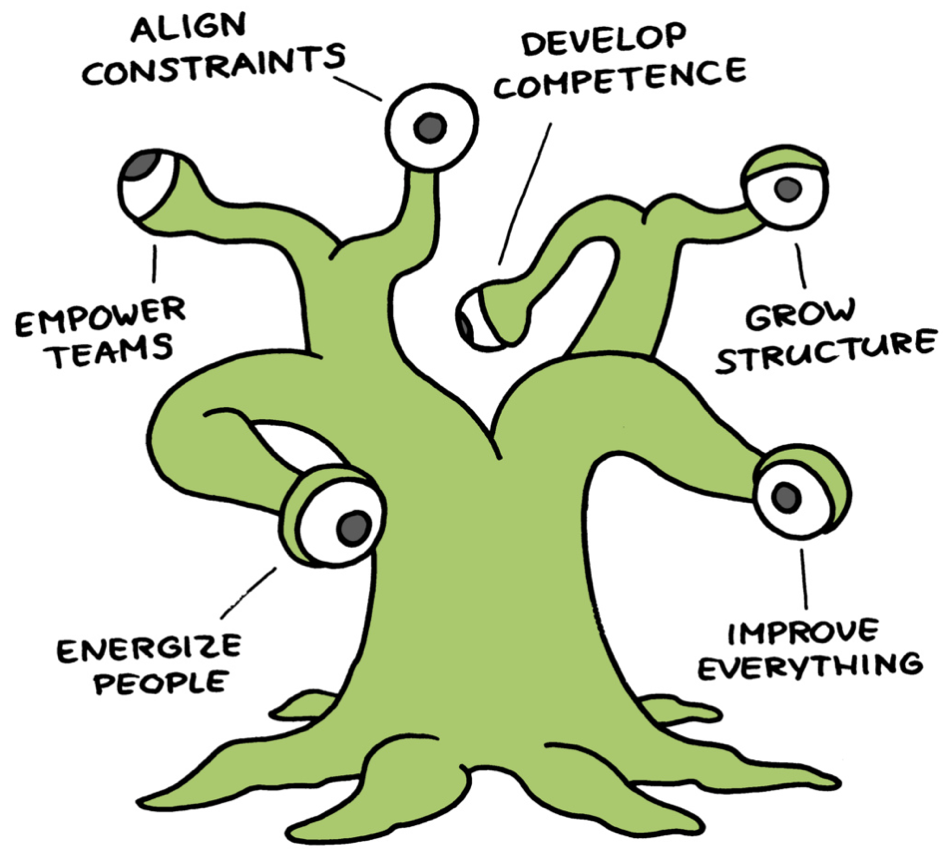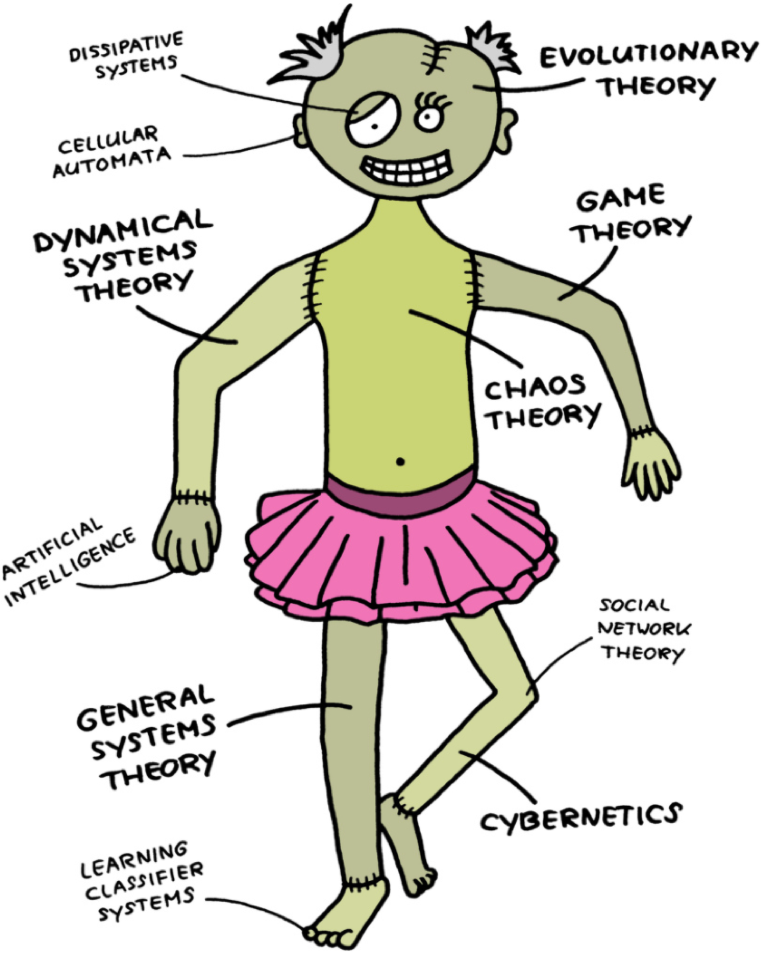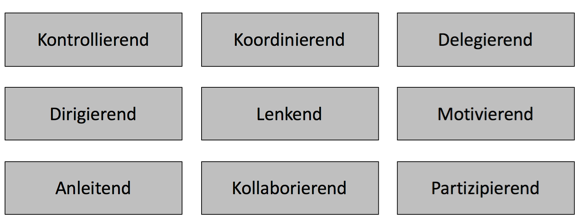Digitization was undoubtedly one of the trending topics in the past year. Contrary to what the talk of the trend suggests, digitization is anything but a temporary phenomenon – it is rather a so-called megatrend: a long-term development that shapes all areas of social life (Source Heap ). In order to implement this, the collective term “Digital Leadership” was formed.
Continued to pose Heap the following: Never has the market demanded innovations, solutions and methods so quickly, never has the need for skilled workers been higher and never has work been carried out so closely across borders and time limits. This presents managers with new challenges in personnel management. One possible solution is: agile leadership.
So there is agile leadership on the one hand and digital leadership on the other. But what is the difference and which of it is currently optimal in the digital transformation?
Agile leadership
For executives, leadership in an agile organization means in concrete terms: the pyramid is upside down, hierarchical leadership thanks to power is replaced by serving leadership thanks to a role model. Managers who define themselves through specifications and controls, rigid target systems and motivation bonuses, fixed processes and professional authority are now faced with the challenge of having to rethink leadership (Source Heap ).
The pyramid is upside down and agile managers lead differently. If you use Google, you will find many principles and values behind agility and leadership. I would therefore like to exemplify the Article by Haufe and quote the principles from the Google study in the article as an example of agile leadership:
- Be a good coach.
- Empower your team and then don’t worry about every little thing.
- Show an interest in the success and wellbeing of your people.
- Be productive and focus on results.
- Be a good communicator and listen to your team.
- Support your employees in their career development.
- Show a clear vision and understandable strategy.
- Have the necessary professional skills to advise your team.
Overall, agile leadership demands various principles from managers. Appelo once portrayed this quite well as a being with many eyes, which has to direct the focus on many things. If you take a closer look at the principles, you will notice that an agile manager is in great demand. Read on for more mine Article on agile leadership or look in the book of Boris Gloger .

Digital Leadership – Agile Leadership only digital?
Now a new word reaches us: digital leadership. First of all, like agile leadership, this is a collective term for leadership principles in the digital age. If you look at the first article, both terms are often congruent in many places. But why actually digital leadership? That says about that Research project of the Crisp:
A number of high expectations are projected onto the new generation of executives. In addition to a large number of desired characteristics, the digital leader primarily maintains a constructive and continuous exchange with his own IT department, actively informs himself about IT innovations and thinks disruptively with a view to new processes and business models.
If you take a look at my articles on digital leadership, you will find numerous principles, which again are often congruent. However, there is one crucial point: there is now a digital change, which demands numerous new trends and, above all, more know-how and digital competence from executives. In addition to the being with many eyes, a manager now has to understand a lot of theories and trends. Topics such as remote guidance etc. also come into play. For more, you can check out mine Article on digital leadership or in that Book by Petry watch.

Digital leadership expands agile leadership
So it should be managed even more individually and the manager should familiarize himself even more deeply with topics related to digitization. But how do you lead more individually? There are also numerous pages on which a situational leadership is explained. In short, that just means that you lead every employee with the right methods. There are broadly nine methods of leading people.

Digital leadership – the manager’s tools
In the following I would like to briefly explain the 9 management tools that a manager can use. He has to juggle with these daily and alternately for each employee. The management methods differ fundamentally in the autonomy of the employee in the search for and completion of tasks and in the eye level with the manager. This is shown in the following figure. I don’t know if these are complete and 100% correct. I am currently researching it myself and will update it every now and then if there is new knowledge. If you discover an exciting source, please let me know using the comment function.

Variant 1: Strong hierarchy
Controlling leadership is probably familiar to most readers. The boss follows and checks every step the employee takes. In this form you have the least autonomy and each task is assigned by a superior.
Conducting leadership is the equivalent of controlling leadership, only the control is less strong. The conductor of an orchestra sets the pace, but not how to play the instrument.
Delegating leadership has the greatest autonomy and the boss completely passes a task on to the employee without instructions on how to do it. This usually happens between department and team leaders. There is enormous autonomy, but there is no eye level.
Variant 2: Medium hierarchy
Steering leadership is the targeted distribution of tasks. The boss passes on a task, but no longer says how to do it. Basically, you can compare this to a project manager who is authorized to issue instructions.
In coordinating leadership, the boss only makes sure that all tasks are somehow done and no longer assigns them specifically. So he is more likely to vote that the tasks are done. It could almost be a product owner.
Collaborative leadership works through things together. This can be compared to a team that works on a project and has a team spokesperson, who only steps in and gives instructions when necessary. So he supervises rather than actually leads and helps the team. One can even say that this could also be a kind of Scrum Master.
Variant 3: Little hierarchy
Instructive leadership is typical for the integration of new employees. One employee is trained and instructed by another. This state of affairs often does not last long. As in all of the following examples, the team leader is part of the team.
Motivational leadership aims to maintain performance, i.e. motivation, and takes care of the well-being in the team, so to speak. That too could be a Scrum Master.
Participatory leadership is behavior that involves the rest of the team. So there are democratic elements and team decisions here.
[yop_poll id=”15″]
Conclusion
It doesn’t really matter whether it is agile or digital. It is becoming increasingly strenuous for managers, as they are expected to have high emotional skills as well as professional skills. On the one hand, they should drive digital change at high speed and, on the other hand, lead each employee as he or she wants with great flexibility. In the end, it turns out that behind digital leadership there is actually an increasing expectation of agile leadership around digital topics and even greater flexibility in the selection of management tools.
[werbung]
[fotolia]



